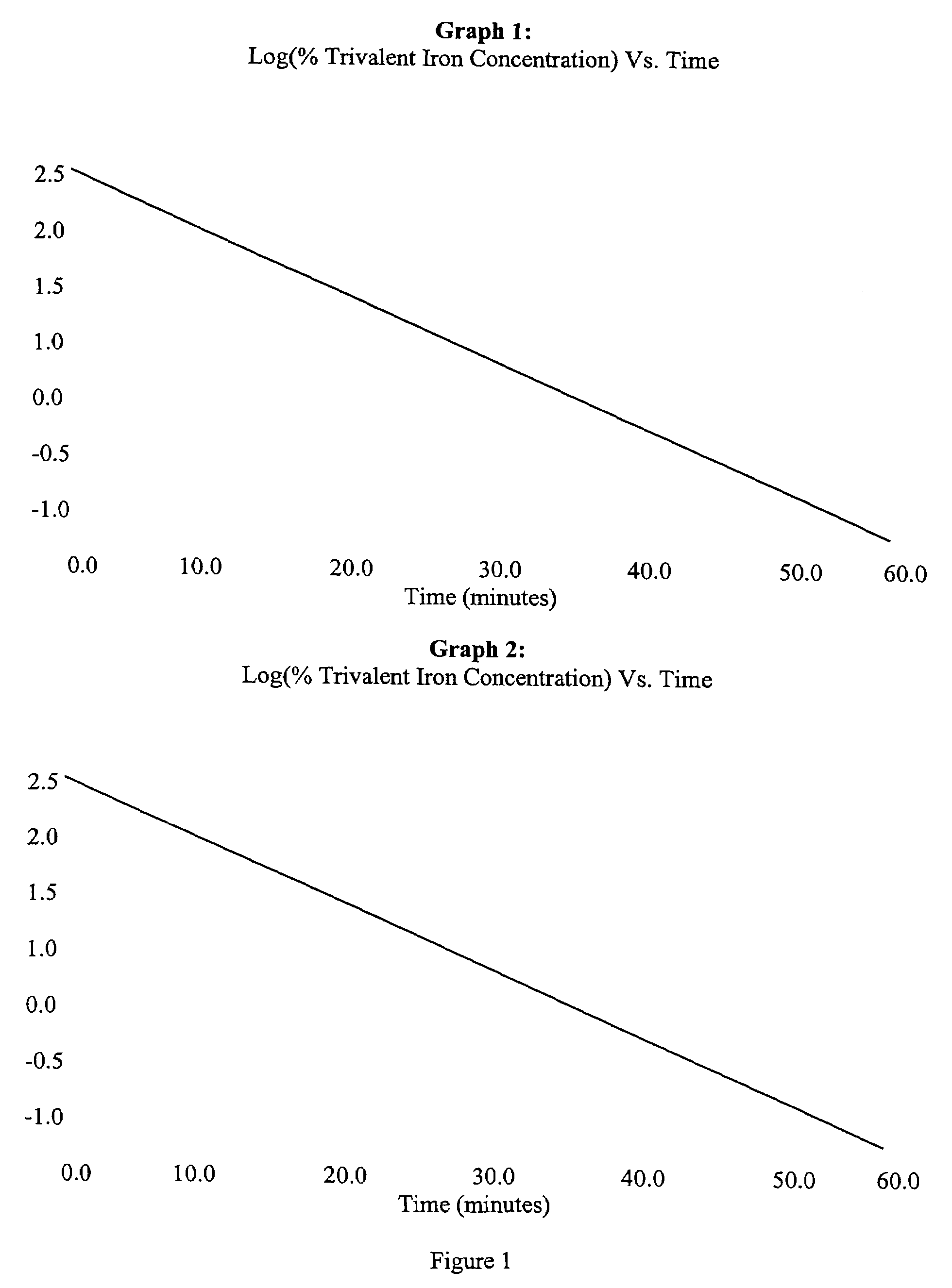Bioequivalence test for iron-containing formulations
a bioequivalence test and iron supplement technology, applied in the direction of synthetic polymeric active ingredients, instruments, suspensions, etc., can solve the problem that chemical tests alone cannot predict bioavailability
- Summary
- Abstract
- Description
- Claims
- Application Information
AI Technical Summary
Benefits of technology
Problems solved by technology
Method used
Image
Examples
example 1
In Vitro Test's use in Control of Intermediate Iron Sucrose Solutions
[0047]A saturated ferric chloride solution is contacted with a 10% w / v sodium carbonate solution at a neutral pH of about 7. The resulting colloidal ferric hydroxide gel is washed with sufficient quantities of purified water to remove all trace amounts of sodium chloride, present as a by-product of the reaction.
[0048]A sufficient quantity of saturated sucrose solution is added to the colloidal ferric hydroxide gel at a volume equivalent to produce a final solution containing approximately 4.0% w / w elemental iron. The solution's pH is adjusted to 10.7 with sodium hydroxide and the solution is mixed at 90° C. for 36 hours. In-process QC samples are taken for pH, iron content and in vitro bioequivalence testing. If the results are within limits, the solution's volume is adjusted by addition of purified water to provide a final iron content of about 4.0% w / w elemental iron, then filtered through a 0.2 micron membrane.
[...
example 2
In Vitro Test's use in Control of Iron Sucrose Solutions Suitable for Injectable Use.
[0052]An iron sucrose solution, suitable for injectable use, is prepared by diluting an intermediate solution, as described in Example 1, with water for injection to a final elemental iron concentration of 20 mg / mL. The resulting solution's pH is adjusted to 10.8 with sodium hydroxide, then mixed until homogeneous. The solution is transferred via stainless steel supply lines and filtered through two sterilized 0.2 micron filters set-up in series into a sterilized filling flask. The filter and filling flask are set-up under laminar flow inside the designated filling room under constant class 100 conditions.
[0053]All equipment used during filling is identified, sterilized, and recorded. Stoppers are washed, siliconized, depyrogenated and sterilized. The glassware is washed using deionized water with a final rinse of water for injection, then depyrogenated.
[0054]The vial fillers are situated under lami...
PUM
| Property | Measurement | Unit |
|---|---|---|
| diameter | aaaaa | aaaaa |
| diameter | aaaaa | aaaaa |
| pH | aaaaa | aaaaa |
Abstract
Description
Claims
Application Information
 Login to View More
Login to View More - R&D
- Intellectual Property
- Life Sciences
- Materials
- Tech Scout
- Unparalleled Data Quality
- Higher Quality Content
- 60% Fewer Hallucinations
Browse by: Latest US Patents, China's latest patents, Technical Efficacy Thesaurus, Application Domain, Technology Topic, Popular Technical Reports.
© 2025 PatSnap. All rights reserved.Legal|Privacy policy|Modern Slavery Act Transparency Statement|Sitemap|About US| Contact US: help@patsnap.com

